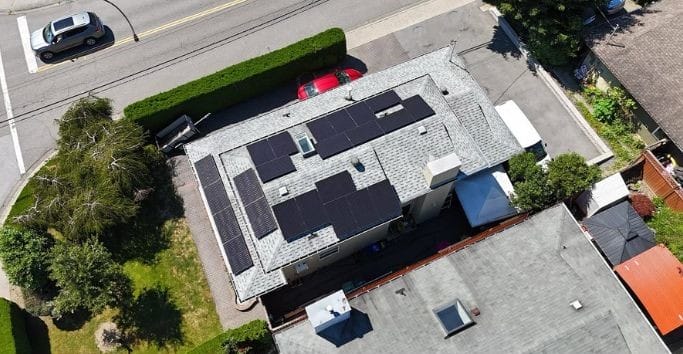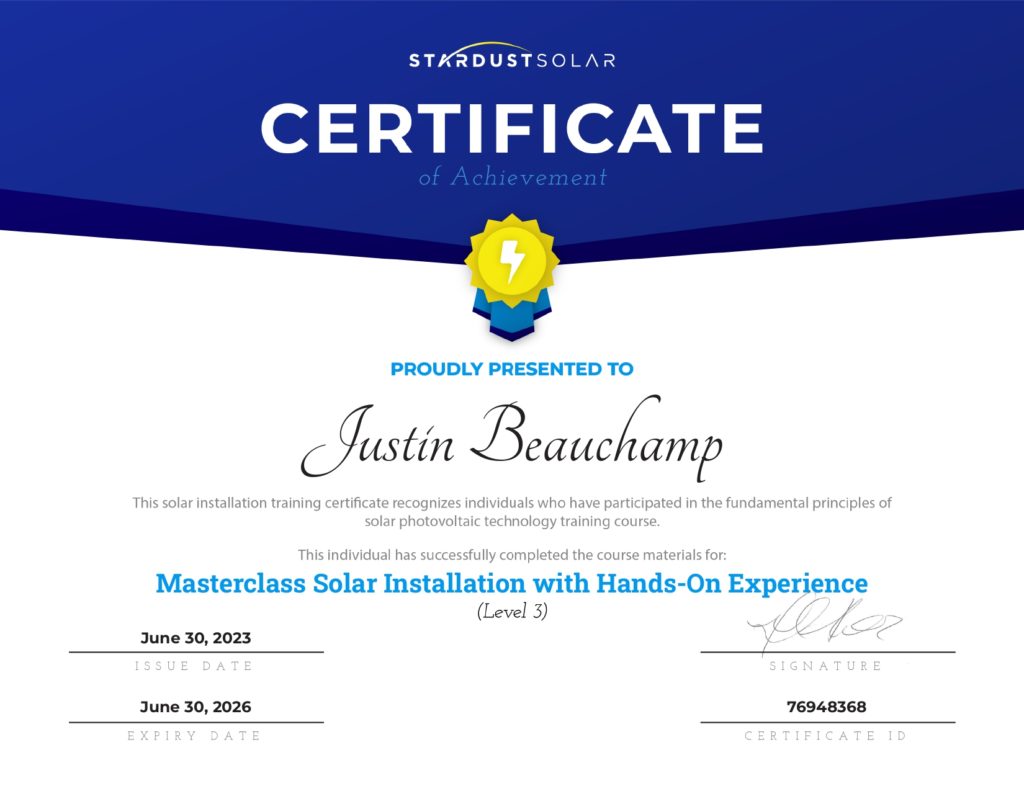Sign #1: Decreased Energy Production
- Aging Panels. Despite their durability, PV systems lose efficiency over time. As they age, material degradation and cell resistance reduce sunlight-to-electricity conversion.
- Accumulated Dirt or Debris. Dust, dirt, leaves, and other debris can accumulate. This grime blocks sunlight from reaching photovoltaic cells.
- Shading. Growing trees, new buildings, and snow can cast shadows. Even partial shading reduces sunlight to the units, lowering electric output.
How To Identify Decreased Production
If your energy production steadily declines, especially compared to historical data, your panels may be underperforming. For instance, if your panels generate 250 kWh of electricity per month instead of 300 kWh. This decline reduces monthly electric generation reports or utility bill savings.What You Should Do
Regular upkeep is key. Cleaning regularly removes dirt, leaves, and other debris to maximize sunlight absorption. High-dust or pollen areas require more frequent cleaning.- A certified technician can inspect for wiring, inverter, and cell damage.
- Upgrade to newer, more efficient units to boost energy production if yours are old or damaged.
- Better efficiency ratings and technology in modern PV can improve system performance and longevity.
Sign #2: Outdated Technology
Innovations in solar installation improve efficiency and performance. Due to these advancements, newer panel operates efficiently than older ones. Output gains can result in upgraded:- Cell technology
- Materials
- Panel design
Knowing When It’s Time to Upgrade
| Sign | Description | Indicator |
| Reduced Efficiency | Producing less electricity than current technology can mean they are outdated | Below 15% efficiency |
| Compatibility Issues | New inverters, battery storage, and monitoring tools may not work with the older version | Performance hindrance due to incompatibility |
What You Should Do
- Evaluate Technological Advancements. Compare the latest technology to your system regularly to determine if an upgrade will boost efficiency and performance.
- Talk to an Expert. A technician can evaluate your system’s technology and compatibility with newer components to help you decide suitable upgrades.
Sign #3: Warranties Expiring
Solar energy system warranties are usually 20–25 years. These warranties gradually reduce repair and replacement coverage, leaving you vulnerable if problems arise. After the warranty period, the manufacturer may stop providing support or parts. This means identifying and fixing issues can be difficult without spending money.- Warranty Expiration Date. Check your warranty documents for expiration dates. Nearing warranty expiration means more susceptible to issues without manufacturer support.
- Lack of Manufacturer Support. If you can not get parts or services, they may be out of warranty. This increases repair costs and downtime.
What You Should Do
Check your warranty for coverage and expiration. Consider upgrading or replacing before your warranty expires to avoid issues and ensure support.- Contact your original installer or a trusted professional to discuss your options.
- Experts can help you decide whether replacing now or adding service agreements will save you money.
- Planning reduces risks and maintains system productivity.
Sign #4: Weather Damage
Canada’s hailstorms, high winds, and heavy snowfall can degrade the solar panel system.- Intense winds can dislodge panels
- Hail can dent or crack them
- Pressure of heavy snowfall can cause harm and misalignment
How To Spot Weather Defects
- Observable Damage. Dents, cracks, and chips on your unit indicate defects.
- Performance Drops. A drop in energy output after severe weather indicates degradation. If your energy production drops significantly after a hailstorm or heavy snowfall, your PV may be damaged.
What You Should Do
Check your solar panel installations regularly, especially after bad weather. Verify they work and check for visible damage or alignment changes. If you are uncertain of the damage’s full extent, it is wise to engage a professional to assess it.- Fixes might be enough to get things working again after minor wear, like tiny dents or cracks.
- If the damage is extensive or affects multiple panels, replacement may be needed.
- Professionals can assess the defect and recommend the best repair or replacement solution.
Sign #5: Physical Damage (Cracks, Discolouration, or Delamination)
Manufacturing errors can cause inherent defects in even the highest quality solar power system. Some examples of these flaws include:- Surface or internal layer microscopic cracks
- Poor material bonding
- Problems with the protective coatings
Detecting Physical Damage
Cracks
Visible cracks can result in losing structural integrity and electrical performance. These superficial or deeper cracks affect their ability to convert sunlight into electricity. Additionally, moisture ingress can worsen breakage.Discolouration
Black spots, streaks, and fading may indicate material degradation. Discolouration from UV degradation or thermal stress affects coatings and efficiency. It may also indicate a material breakdown.Delamination
The encapsulant, back sheet, and photovoltaic cells peel away during delamination. Thermal cycling, manufacturing defects, or moisture can cause this. Delamination impairs function and causes structural damage.What You Should Do
Hire a technician to inspect the damages. They assess using diagnostic tools and visual inspections. Electrical performance, moisture ingress, and structural integrity will be checked. Repairs are possible for minor damage that does not affect performance. This involves crack sealing or surface discolouration. Significant cracks, discolouration, or delamination usually need replacement. This optimizes performance and reliability. Maintain your units with regular inspections. This detects physical damage early, enabling quick repairs or replacements.
Get Reliable Installation to Ensure Longevity
Through proactive maintenance, you can maximize the benefits of your solar energy system for years to come. Early detection and resolution of these issues ensure your investment continues to save electricity and produce solar energy. Remember, professional installation is essential. The longevity of your system depends on proper installation. MAG Solar deploys experts to handle your solar panel installation project and alignment. We integrate renewable energy with other systems to reduce issues and improve performance.Frequently Asked Questions
What is the recommended frequency for checking the systems for damage?
You should check for damage or wear and tear at least twice a year, ideally in the spring and fall. As an extra precaution, you can check for new problems by conducting an inspection after bad weather.
How does upgrading solar power systems benefit the long term?
In general, newer technology is more efficient, works better in low light, and lasts longer. Upgrading your system can boost energy output, raise excess energy costs, lower electricity bills, and improve reliability.
This leads to better performance and value in the long run. Installing solar panels cost less than you might think, considering all the benefits of new technologies.
Without completely replacing my home panels, is there a way to make it more efficient?
Some ways to improve efficiency that do not involve replacing the whole system include:
- adjusting the angle and orientation
- removing debris or obstructions
- updating the inverters
- performing regular maintenance
Expert advice based on your system’s present state is available through consultation with technicians.

